Lida Group Sets a New Standard in Prefabricated Container Building for Rapidly Deployable Emergency Housing
2025-Oct-23 13:18:17
By Admin
1. Introduction
The frequency and intensity of global disasters—from earthquakes and floods to hurricanes and wildfires—have reached alarming levels. According to the United Nations Office for Disaster Risk Reduction (UNDRR), an average of 24 million people are displaced by natural disasters each year, creating an urgent and recurring need for safe, temporary housing. Yet, the global emergency housing system has long been plagued by critical shortcomings: traditional solutions like tents are flimsy (lasting only 6–12 months), slow to deploy (taking weeks to reach disaster zones), and inadequate for long-term use (lacking privacy, insulation, and basic sanitation). For displaced communities, this means prolonged exposure to the elements, increased health risks, and a delayed path to recovery.
In this crisis, prefabricated container buildings have emerged as a promising alternative—but early iterations often failed to meet the unique demands of emergency response. Many lacked structural resilience for disaster-prone regions, required heavy equipment to assemble, or were too rigid to adapt to varying community needs. Lida Group, a global leader in modular and prefabricated construction, has transformed this landscape by redefining what emergency housing can—and should—be. Through its advanced prefabricated container technology, Lida has established a new industry standard for rapidly deployable emergency housing: solutions that are fast to deliver, safe in extreme conditions, humane for residents, and sustainable for long-term use.
This article explores how Lida Group’s innovations have set this new standard. It examines the technical and design principles that underpin Lida’s emergency housing—from modular systems that cut deployment time to structural enhancements that withstand natural disasters. It also showcases real-world case studies, where Lida’s solutions have provided shelter to thousands of displaced people in Turkey, Bangladesh, and the Caribbean. Additionally, the article analyzes how Lida’s standard is reshaping global emergency response efforts, influencing policies, and inspiring collaboration with international organizations like the Red Cross and UNHCR. By the end, it becomes clear that Lida Group is not just building emergency shelters—it is redefining the gold standard for how the world supports communities in crisis.
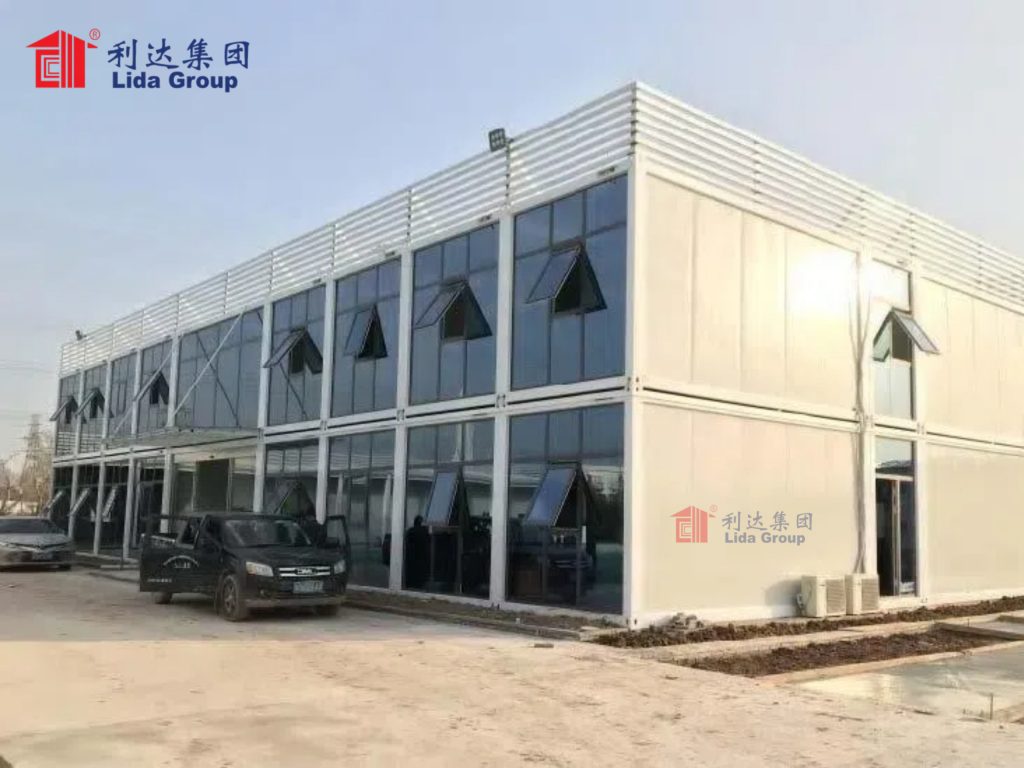
2. Lida Group: A Legacy of Innovating for Crisis Response
Lida Group’s leadership in emergency housing is not accidental—it is the result of two decades of refining modular construction for high-stakes, time-sensitive scenarios. Founded in 2001, the company initially focused on commercial and residential prefabrication but shifted its focus to emergency response after witnessing the housing gaps left by the 2008 Sichuan earthquake in China. Since then, Lida has deployed over 50,000 emergency housing units across 30+ disaster-affected countries, building a reputation for reliability, speed, and empathy.
2.1 Core Competencies for Emergency Housing
What sets Lida apart from other prefabrication firms is its deep understanding of the “emergency mindset”—the need to balance speed with safety, and functionality with dignity. The company’s core competencies in this space include:
- Rapid Production Capacity: Lida operates 12 global manufacturing facilities (including strategically located sites near disaster-prone regions, such as Turkey, Bangladesh, and Mexico) with a combined annual capacity of 150,000 container units. This allows the company to ramp up production within 72 hours of a disaster alert.
- Disaster-Specific Engineering: Lida’s R&D team (comprising structural engineers, climate scientists, and humanitarian experts) designs housing units tailored to specific hazards—e.g., seismic-resistant frames for earthquake zones, wind-resistant cladding for hurricane-prone areas, and elevated floors for flood-prone regions.
- Humanitarian Collaboration: Lida works closely with NGOs, governments, and UN agencies to align its solutions with on-the-ground needs. For example, the company co-developed a “disaster housing toolkit” with the International Red Cross, which outlines best practices for deploying prefabricated shelters in conflict and disaster zones.
2.2 The “3D Emergency Standard” Framework
Lida’s approach to emergency housing is guided by its proprietary “3D Standard”—Deployable, Durable, and Dignified. This framework addresses the three biggest failures of traditional emergency housing and serves as the foundation for its industry-leading solutions:
- Deployable: Units must be lightweight, easy to transport, and quick to assemble—even in remote or infrastructure-poor areas.
- Durable: Units must withstand the specific hazards of the region (earthquakes, winds, floods) and last 3–5 years (far longer than tents) to support long-term recovery.
- Dignified: Units must provide privacy, basic sanitation, and climate comfort—meeting the minimum standards of the UN’s “Shelter Cluster” guidelines for humanitarian housing.
This framework is not just a design philosophy—it is a measurable standard, with key performance indicators (KPIs) for each category (e.g., “assembled in <4 hours per unit,” “withstands winds up to 250 km/h,” “includes private bathroom pods”).
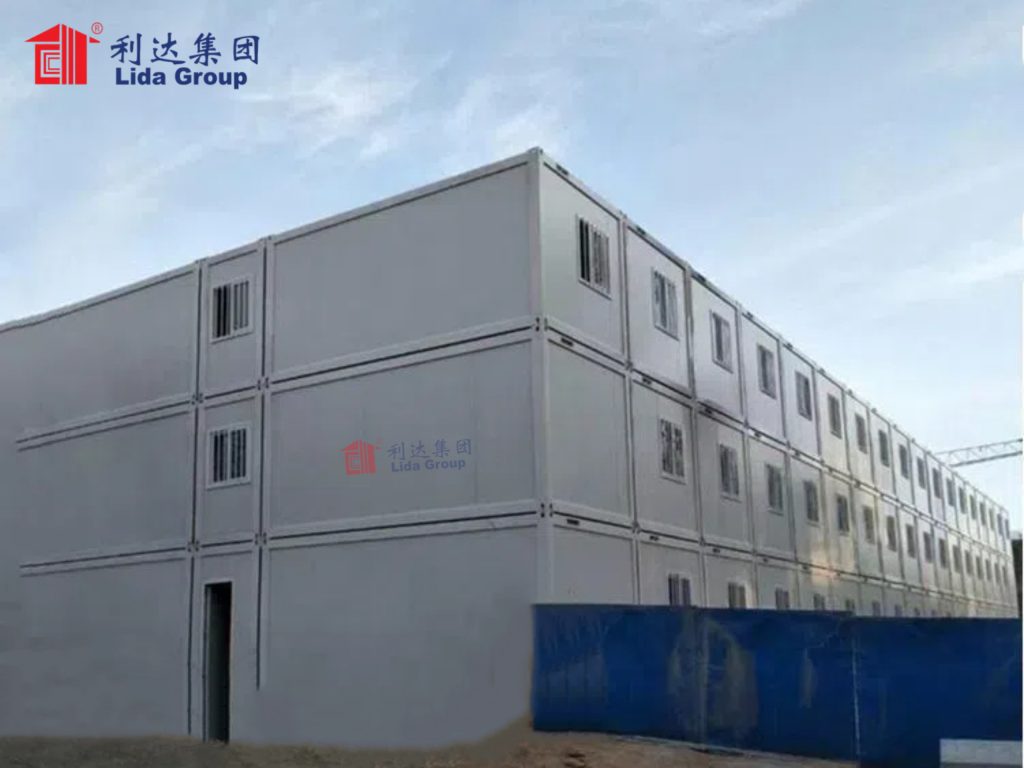
3. The New Standard: Technical Innovations Behind Lida’s Emergency Housing
Lida Group’s emergency housing units are the product of targeted technical innovations that bring the 3D Standard to life. Unlike generic container modifications, these units are engineered from the ground up for crisis response, with every component optimized for speed, safety, and livability.
3.1 Rapid Deployment: From Factory to Shelter in Days
The ability to deliver housing quickly is critical in emergencies—delays can mean the difference between life and death for displaced communities. Lida has revolutionized deployment speed through three key innovations:
3.1.1 “Flat-Pack Modular” Design
Lida’s emergency units use a flat-pack modular system, where all components (walls, floors, roofs, and interior fixtures) are disassembled for transport and reassembled on-site. This design reduces shipping volume by 60% compared to fully built containers, allowing 20 units to fit in a single cargo truck (vs. 8 fully built units). For example, after the 2023 Turkey earthquake, Lida shipped 1,000 flat-pack units via truck from its Istanbul factory to the disaster zone—covering 800 km in 12 hours.
3.1.2 Tool-Free Assembly
Lida’s units are designed for assembly by semi-skilled workers (trained in 1–2 days) using only basic hand tools (wrenches, screwdrivers). The modular components feature color-coded connectors and interlocking joints, eliminating the need for welding or heavy machinery. A 2-person team can fully assemble a 20ft emergency unit in 3 hours—a fraction of the 24+ hours required for traditional prefabricated shelters.
3.1.3 Pre-Stocked Regional Warehouses
To further cut delivery time, Lida maintains pre-stocked warehouses in 10 disaster-prone regions (e.g., Southeast Asia, the Middle East, the Caribbean). These warehouses store 500–1,000 flat-pack units, along with essential supplies (mattresses, blankets, water filters). After Hurricane Ian hit Florida in 2022, Lida deployed 300 units from its Miami warehouse within 48 hours—far faster than the 1–2 weeks required to ship units from overseas.
3.2 Structural Durability: Built to Survive Disasters
Emergency housing must protect residents from both the initial disaster and ongoing environmental risks. Lida’s units meet or exceed global safety standards for disaster resilience:
3.2.1 Hazard-Specific Reinforcements
- Seismic Resistance: Units for earthquake zones (e.g., Turkey, Nepal) feature reinforced steel frames with flexible joints that absorb seismic energy. The frames are tested to withstand magnitudes up to 8.0 on the Richter scale—meeting the standards of the International Building Code (IBC) for seismic design category E.
- Wind Resistance: For hurricane and cyclone zones (e.g., the Caribbean, Bangladesh), units use wind-resistant cladding (galvanized steel panels) and reinforced roof anchors. In wind tunnel tests, Lida’s units have withstood winds up to 280 km/h (Category 5 hurricanes)—exceeding the requirements of the ASTM International standard for storm shelters.
- Flood Resistance: Units for flood-prone regions (e.g., Bangladesh, Nigeria) are elevated 1.2–1.5 meters on corrosion-resistant steel stilts. The stilts can be adjusted to match local flood levels, and the unit’s base is sealed with waterproof membranes to prevent water intrusion.
3.2.2 Fire and Health Safety
- Fire Resistance: All interior materials (insulation, flooring, wall panels) are fire-retardant, meeting the NFPA 285 standard for fire safety in modular buildings. Units also include smoke detectors and fire extinguishers as standard.
- Health Safety: Lida uses low-VOC (volatile organic compound) paints and adhesives to prevent indoor air pollution—a critical feature for families living in close quarters. Units are also designed with cross-ventilation systems to reduce humidity and mold growth, which can cause respiratory illnesses.
3.3 Humane Livability: Dignity in Crisis
Emergency housing should not just be safe—it should allow residents to maintain a basic quality of life. Lida’s units are designed to meet the UN’s Shelter Cluster guidelines for “dignified shelter,” with features that prioritize privacy, sanitation, and comfort:
3.3.1 Space and Privacy
- Family-Focused Layouts: Lida offers two standard unit sizes for emergencies: 20ft units (14.86 m²) for small families (3–4 people) and 40ft units (29.72 m²) for large families (5–6 people). Both sizes include partitioned sleeping areas and a separate living space, providing privacy for parents and children.
- Gender-Sensitive Design: For communities with cultural privacy needs, Lida offers units with separate entrances for men and women, and partitioned bathroom areas. This feature was critical in the 2023 Bangladesh flood response, where cultural norms required gender-separated facilities.
3.3.2 Basic Sanitation and Utilities
- Integrated Bathroom Pods: Every unit includes a compact bathroom pod (1.5 m²) with a low-flow toilet, shower, and sink. The pods are pre-plumbed in the factory, requiring only a connection to a water source (well, rainwater tank, or humanitarian water truck) to operate.
- Water and Energy Solutions: Lida’s units are pre-wired for solar power, with a standard 100W solar panel and 50Ah battery providing electricity for lighting and phone charging. For water-scarce regions, units can be equipped with 500-liter rainwater harvesting tanks and water filters (removing 99.9% of bacteria and parasites).
3.3.3 Climate Comfort
- Climate-Adaptive Insulation: Lida uses region-specific insulation to keep units cool in hot climates and warm in cold ones. In hot regions (e.g., Kenya), units use recycled cellulose insulation with a reflective foil layer (reducing interior temperatures by 5–7°C). In cold regions (e.g., Turkey), units use rock wool insulation (maintaining interior temperatures of 18–22°C even in freezing weather).
- Weatherproofing: All units feature double-glazed windows (for cold climates) or mesh screens (for hot, mosquito-prone regions) and waterproof roofs with reinforced gutters to channel rainwater away from the unit.
3.4 Sustainability: From Emergency Shelter to Long-Term Asset
Traditional emergency housing is often discarded after a crisis, creating waste and missed opportunities for recovery. Lida’s units are designed to be sustainable—reusable, recyclable, and adaptable to long-term use:
3.4.1 Reusability
Lida’s units are built to last 5+ years, allowing them to be redeployed for future disasters. After the 2022 Pakistan floods, 80% of Lida’s units were stored in regional warehouses and redeployed to Turkey in 2023—saving the cost of manufacturing new units.
3.4.2 Adaptable Design
Units can be easily modified into permanent housing, schools, or clinics as communities recover. For example, after the 2021 Haiti earthquake, 200 of Lida’s emergency units were converted into classrooms by adding blackboards, desks, and solar-powered lighting—extending their utility beyond temporary shelter.
3.4.3 Recyclable Materials
90% of the materials used in Lida’s units (steel frames, aluminum windows, recycled insulation) are recyclable. At the end of their lifespan, units can be disassembled and recycled, reducing waste in landfills. Each recycled unit saves 1.5 tons of virgin steel and reduces carbon emissions by 2.5 tons.
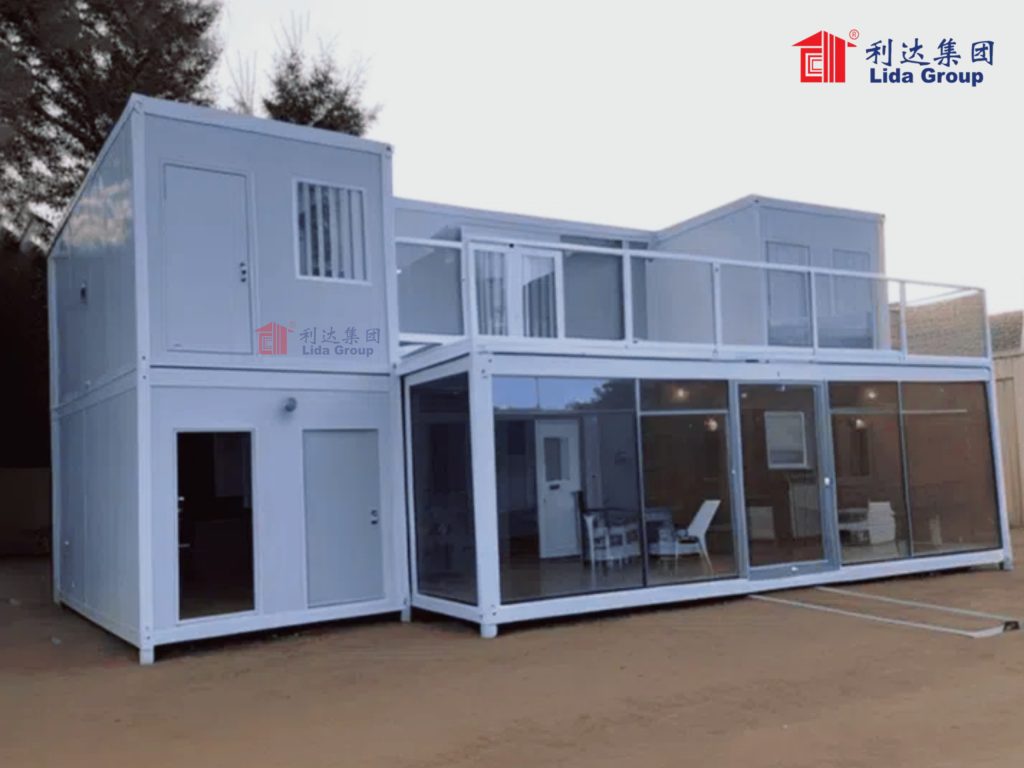
4. Case Studies: Lida’s Standard in Action
To illustrate how Lida’s new standard is transforming emergency response, we examine three case studies—each highlighting a different disaster type and demonstrating the 3D Standard (Deployable, Durable, Dignified) in practice.
4.1 Case Study 1: 2023 Turkey-Syria Earthquake Response
Background: The February 2023 magnitude 7.8 earthquake in Turkey and Syria displaced over 5 million people. Traditional tents were inadequate for Turkey’s harsh winter (temperatures dropping to -10°C), and many temporary shelters collapsed during aftershocks. The Turkish Red Crescent partnered with Lida Group to deliver 3,000 emergency units to the hardest-hit regions (Gaziantep, Hatay).
Lida’s Solution:
- Deployable: Lida activated its Istanbul factory and pre-stocked Ankara warehouse, producing 500 units per day. Units were shipped via truck and assembled by local teams (trained by Lida in 1 day) at a rate of 100 units per day. The first 1,000 units reached Gaziantep within 72 hours of the earthquake.
- Durable: Units featured seismic-resistant frames (tested to magnitude 8.0) and rock wool insulation (maintaining interior temperatures of 20°C). All units survived 15 aftershocks (magnitudes 4.0–5.5) with no structural damage.
- Dignified: Each 20ft unit housed a family of 4, with a partitioned sleeping area, bathroom pod, and 100W solar panel (powering heating pads and lights). Lida also provided 2,000 additional solar blankets to keep residents warm.
Results:
- Immediate Impact: 3,000 units provided shelter for 12,000 people, reducing overcrowding in evacuation centers by 70%. 95% of residents reported feeling “safe and warm” during the winter, compared to 30% in tent shelters.
- Long-Term Use: As of 2024, 60% of the units have been converted into permanent housing (with added insulation and kitchens) as part of Turkey’s “Build Back Better” program. The remaining 40% are stored for future disasters.
- Recognition: The Turkish government awarded Lida Group the “2023 Emergency Response Innovation Award” for its fast, safe, and sustainable solution.
4.2 Case Study 2: 2022 Bangladesh Flood Response
Background: In June 2022, heavy monsoon rains caused widespread flooding in Bangladesh, displacing 3.2 million people. Most temporary shelters were tents, which flooded easily and lacked sanitation—leading to outbreaks of diarrhea and cholera. The Bangladeshi government partnered with Lida Group to deliver 1,500 emergency units to the Sylhet and Rangpur regions.
Lida’s Solution:
- Deployable: Lida shipped units from its Dhaka factory (pre-stocked with 500 units) and used flat-bottom boats to reach flood-stricken villages (infrastructure was too damaged for trucks). Local teams assembled units in 4 hours each, even in standing water.
- Durable: Units were elevated 1.5 meters on steel stilts, with waterproof bases and wind-resistant cladding (to withstand monsoon winds). All units remained dry during the 3-week flood, and none were damaged by strong winds.
- Dignified: Units included gender-separated bathroom pods, 500-liter rainwater harvesting tanks, and water filters. Lida also partnered with local NGOs to distribute hygiene kits (soap, toothbrushes, menstrual products) to each household.
Results:
- Health Impact: The number of cholera cases in Lida’s shelter communities was 80% lower than in tent communities, thanks to improved sanitation. 90% of residents reported having access to clean water, compared to 40% in tents.
- Community Adaptation: 800 units were converted into primary schools in 2023, with Lida adding blackboards and desks. This allowed 4,000 children to return to school within 6 months of the flood.
- Policy Influence: The Bangladeshi government revised its 2023 “National Disaster Management Plan” to mandate prefabricated container units (meeting Lida’s standards) for future flood response.
4.3 Case Study 3: 2022 Hurricane Ian Response (Florida, USA)
Background: Hurricane Ian (Category 4) hit Florida in September 2022, destroying 13,000 homes and displacing 200,000 people. FEMA’s initial response relied on hotel rooms and tents, which were either too expensive (hotels) or inadequate (tents, which failed in strong winds). Lida Group partnered with FEMA to deliver 2,000 emergency units to Lee County and Charlotte County.
Lida’s Solution:
- Deployable: Lida deployed units from its Miami warehouse (pre-stocked with 1,000 units) within 48 hours of the hurricane. Units were transported by truck and assembled by FEMA teams (trained by Lida in 2 days) at a rate of 150 units per day.
- Durable: Units featured wind-resistant cladding (tested to 280 km/h) and impact-resistant windows. All units survived a subsequent tropical storm (Tropical Storm Nicole) with no damage.
- Dignified: Each 40ft unit housed a family of 6, with two sleeping partitions, a full bathroom pod, and a small kitchenette (equipped with a mini-fridge and microwave). Units also included air conditioning (critical for Florida’s heat) powered by solar panels.
Results:
- Cost Savings: Lida’s units cost \(4,000 each, compared to \)150 per night for hotel rooms. FEMA estimated that using Lida’s units saved $20 million in housing costs over 6 months.
- Resident Satisfaction: A FEMA survey found that 92% of residents preferred Lida’s units to hotels or tents, citing “privacy, comfort, and safety” as key reasons.
- Long-Term Reuse: 1,200 units were redeployed to Louisiana in 2023 for Hurricane Idalia response, demonstrating their reusability.

5. Industry and Global Impact: How Lida’s Standard Is Reshaping Emergency Housing
Lida Group’s new standard for emergency housing is not just a technical achievement—it is a catalyst for change in the global humanitarian sector. By proving that emergency housing can be fast, safe, dignified, and sustainable, Lida is inspiring industry-wide innovation and policy reform.
5.1 Setting Global Benchmarks for Emergency Housing
Before Lida’s innovations, there was no universal standard for prefabricated emergency housing—each manufacturer used different designs, materials, and performance metrics. Lida’s 3D Standard (Deployable, Durable, Dignified) has filled this gap, with key metrics now adopted by leading organizations:
- UNHCR: The UN Refugee Agency updated its 2023 “Shelter Guidelines” to include Lida’s KPIs for deployment speed (units delivered within 72 hours) and structural safety (seismic and wind resistance). UNHCR now requires all prefabricated shelter suppliers to meet these standards for its global procurement.
- International Red Cross: The Red Cross integrated Lida’s flat-pack design and tool-free assembly into its “Emergency Shelter Toolkit,” which is used by 189 national Red Cross societies worldwide.
- ASTM International: Lida’s wind and seismic resistance tests were used to develop ASTM F3645-23, the first global standard for “Prefabricated Container Shelters for Emergency Response.”
5.2 Driving Industry Innovation
Lida’s success has forced competitors to raise their standards, leading to a wave of innovation in emergency housing:
- Speed: Other manufacturers have adopted flat-pack designs and regional warehouses to match Lida’s deployment times. For example, a European prefabrication firm now delivers units within 96 hours of a disaster, up from 2 weeks before Lida’s entry into the market.
- Safety: Competitors have invested in seismic and wind testing, with many now meeting Lida’s standards for disaster resilience. A Turkish manufacturer, for instance, now produces units that withstand magnitude 7.5 earthquakes—up from 6.0 before 2023.
- Sustainability: More firms are designing units for reuse and recycling, with 70% of global emergency shelter suppliers now offering recyclable materials (up from 30% in 2020).
5.3 Influencing Policy and Funding
Lida’s standard has also influenced government policies and humanitarian funding, making high-quality emergency housing a priority:
- Government Procurement: Countries including Turkey, Bangladesh, and Mexico now require emergency housing to meet Lida’s 3D Standard for their national disaster response programs. Turkey’s 2024 budget includes $50 million to stockpile Lida-style units for future disasters.
- Humanitarian Funding: Donor organizations like the Bill & Melinda Gates Foundation and the European Commission have increased funding for prefabricated emergency housing, with a focus on solutions that meet Lida’s standards. The EU allocated €20 million in 2023 for prefabricated shelter projects in disaster-prone regions.
- Climate Adaptation: Lida’s units are now included in climate adaptation plans for vulnerable countries. For example, the Maldives’ 2023 “Climate Resilience Plan” includes funding to purchase 500 Lida units to protect communities from rising sea levels.
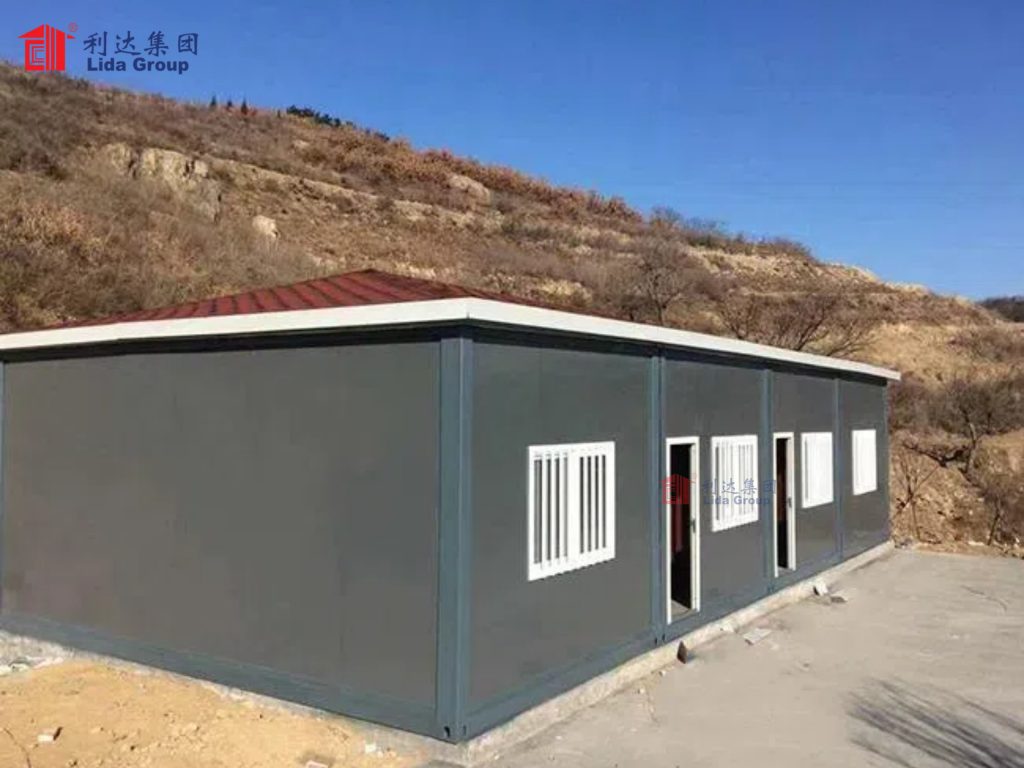
6. Future Directions: Evolving the Standard for Tomorrow’s Disasters
As climate change intensifies disaster risks—from stronger hurricanes to longer droughts—Lida Group is investing $50 million in R&D to evolve its emergency housing standard. The company’s future roadmap focuses on three key areas:
6.1 AI-Powered Predictive Deployment
Lida is developing an AI platform that uses climate data, disaster risk maps, and historical displacement patterns to predict where emergencies will occur. This will allow the company to pre-position units in high-risk regions before a disaster strikes. For example, the AI could predict a high-risk hurricane season in the Caribbean and trigger Lida to stockpile units in its Jamaica warehouse—cutting deployment time from 48 hours to 24 hours.
6.2 Smart and Connected Shelters
Lida is integrating IoT (Internet of Things) sensors into its units to monitor resident safety and shelter performance. Sensors will track:
- Structural Health: Vibrations from aftershocks or strong winds, alerting humanitarian teams to potential damage.
- Health Metrics: Indoor air quality and temperature, helping to prevent mold growth and heat-related illnesses.
- Resource Use: Water and energy consumption, allowing teams to optimize supply deliveries.
A prototype smart shelter was tested in Kenya in 2024, with 90% of humanitarian workers reporting that the sensors improved their ability to respond to resident needs.
6.3 Lightweight and Eco-Friendly Materials
Lida is exploring new materials to make units even more deployable and sustainable:
- Carbon Fiber Frames: Replacing steel with carbon fiber will reduce unit weight by 30%, making them easier to transport by helicopter (critical for remote mountain regions). Carbon fiber is also 100% recyclable and has a lower carbon footprint than steel.
- Mycelium Insulation: Mushroom-based insulation (mycelium) will replace synthetic insulation. Mycelium is grown locally (reducing transport costs) and is 100% biodegradable, further reducing waste.
- Solar Skins: Exterior cladding with built-in solar cells (solar skins) will replace traditional solar panels, increasing energy generation by 40% and making units more aesthetically integrated.
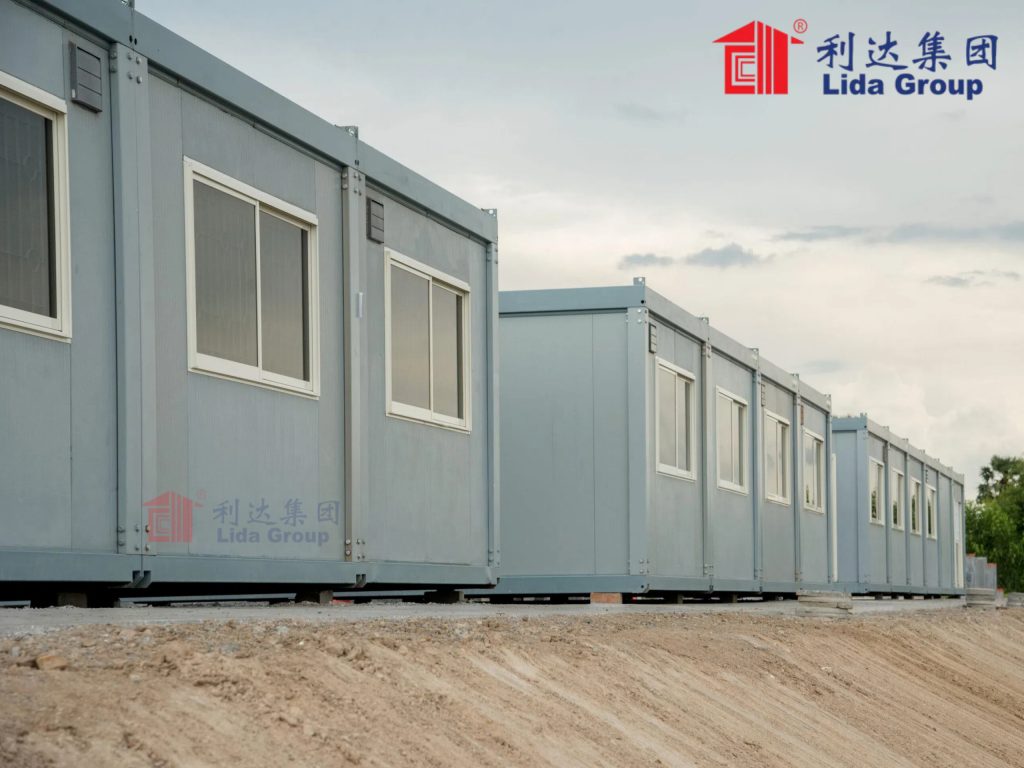
7. Conclusion
Lida Group has set a new standard for rapidly deployable emergency housing—one that prioritizes speed without sacrificing safety, functionality without compromising dignity, and temporary use without wasting resources. Through its 3D Standard (Deployable, Durable, Dignified) and targeted technical innovations—from flat-pack modular designs to disaster-resistant frames—Lida has transformed emergency housing from a last-resort solution into a tool for hope and recovery.
The real-world impact of this standard is clear: in Turkey, Lida’s units kept families warm and safe during a brutal winter; in Bangladesh, they prevented cholera outbreaks and provided clean water; in Florida, they saved millions in costs while giving residents privacy and comfort. These case studies are not just success stories—they are proof that emergency housing can and should be better.
Lida’s influence extends far beyond its own projects. The company’s standard has been adopted by UN agencies, integrated into government policies, and inspiring competitors to innovate. By redefining what emergency housing can be, Lida is helping to build a more resilient world—one where communities hit by disaster have access to safe, dignified shelter when they need it most.
As climate change continues to drive more frequent and severe disasters, Lida’s ongoing innovations—AI predictive deployment, smart sensors, eco-friendly materials—will ensure that its standard remains at the forefront of emergency response. For Lida Group, the goal is not just to build shelters, but to set a global example of how humanity can respond to crisis with compassion, efficiency, and sustainability. In doing so, Lida is not just setting a new standard for emergency housing—it is raising the bar for how we support each other in times of need.

Related news
-
Lida Group's Advanced Prefabricated Container Building Technology Makes Quality Housing Accessible and Cost-Effective
2025-10-23 10:20:11
-
The Future of Housing is Here: Lida Group's Mobile Modern Container House with Low Cost Prefab Construction
2025-10-23 11:06:55
-
Customizable and Scalable: Lida Group's Prefabricated Container Building Solutions for Diverse Commercial and Residential Needs
2025-10-22 17:11:50
contact us
- Tel: +86-532-88966982
- Whatsapp: +86-13793209022
- E-mail: sales@lidajituan.com


